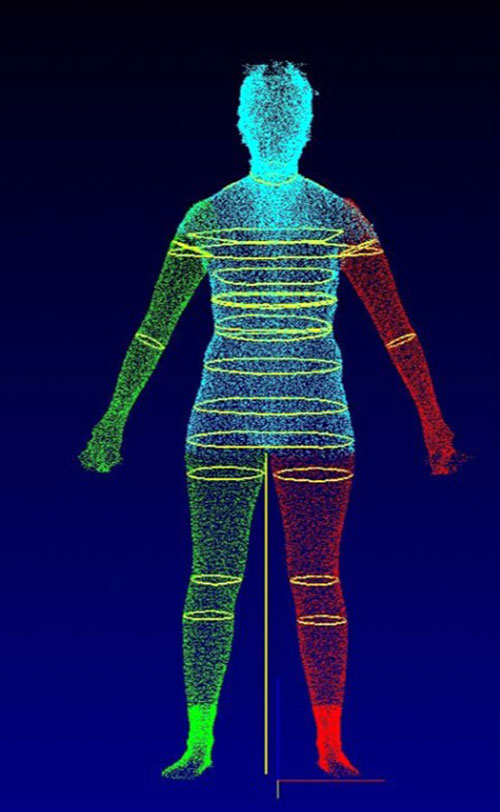
If you’ve made a habit of sidestepping mirrors and shunning your reflection, new research from Florida State University suggests that you may want to keep a safe distance from 3-D body scanners as well.
In a paper published in the Clothing and Textiles Research Journal, Jessica Ridgway, an assistant professor of retail entrepreneurship in the Jim Moran School of Entrepreneurship, asserts that mood and body satisfaction can take major hits after viewing oneself represented as a 3-D avatar.
“When we look in the mirror, we’re only seeing two dimensions, so we don’t always have the most realistic perception of our bodies,” Ridgway said. “Being able to interact with one’s own 3-D avatar — spin it around and look at it from every angle — allows us to observe our body in a way that we never get to see, and the data from my study indicates there may be negative psychological consequences.”
While few of us routinely encounter 3-D body scanners in our daily lives, some anticipate that the technology’s ability to provide precise measurements and imaging will soon lead to its integration into retail and exercise environments.
But these findings, Ridgway said, should give pause to those who believe body scanning could improve customer experience.
“Although there are likely several benefits for using body scanning in retail environments, I think retailers and other businesses need to carefully consider their uses of 3-D body scanning,” she said. “Retailers might be under the impression that giving their customers access to this technology will aid in helping them find better-fitting garments, but such technology might have a reverse effect by actually decreasing their body image perceptions.”
Ridgway suggests that these findings might be explained by self-discrepancy theory — the notion that when we perceive a dissonance between our actual and ideal selves, we experience feelings of dejection or emotional discomfort.

In the study, 101 men and women were first asked to complete a questionnaire determining their baseline body satisfaction, mood and appearance management behavior — acts or decisions related to enhancing personal appearance. Before they were scanned, participants were also asked to identify their perceived actual and ideal body sizes based on a standard body image assessment tool.
After being scanned and interacting with their 3-D renderings, participants completed the same body satisfaction questionnaire they were provided at the outset of the study. Ridgway found the discrepancies between their actual and ideal selves were significantly magnified post-screening, and self-reported mood and body satisfaction among both men and women decreased compared to their baseline reports.
However, Ridgway found that it was men who were more likely to respond to those magnified discrepancies by engaging in increased appearance management behavior.
“Finding that males were actually more motivated to manage their appearance after viewing their avatar was quite surprising,” Ridgway said. “But because the ideal body for a male is typically more muscular in stature — which relates to appearance management behaviors like exercise and fasting — it made a good deal of sense.”
While the emotional discomfort of a dissatisfying body scan might serve as motivation for some, Ridgway’s study reveals that for most, that level of multidimensional detail can dampen body image perception. Despite these findings, Ridgway said that 3-D body scanning technology provides exciting opportunities for future research and will continue to provide further insight into the unique experience of viewing one’s self in 3-D.
“As 3-D body scanners start appearing in more retail and gym environments in the future, it will be interesting to see how they motivate or change behavior,” she said.




